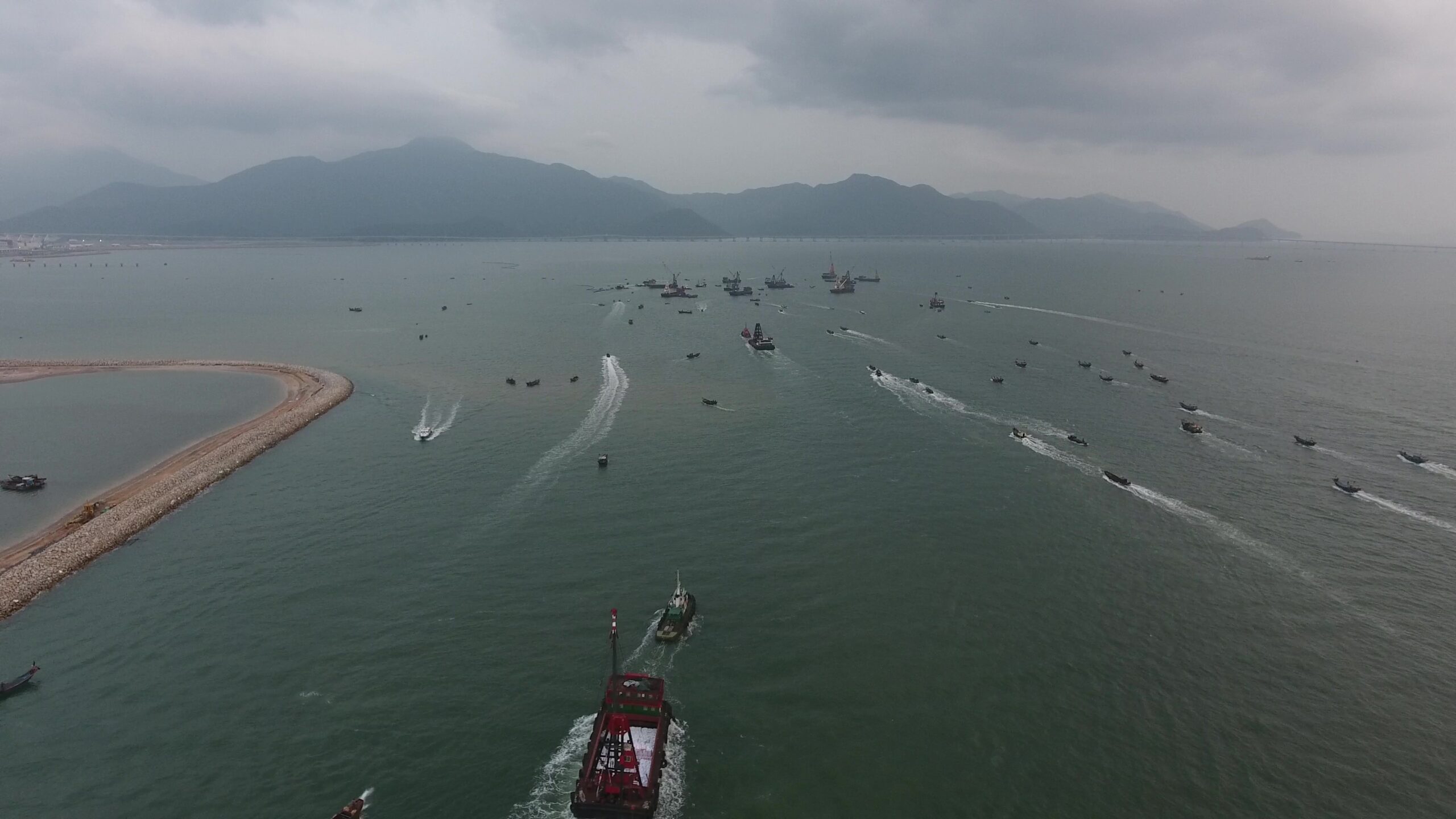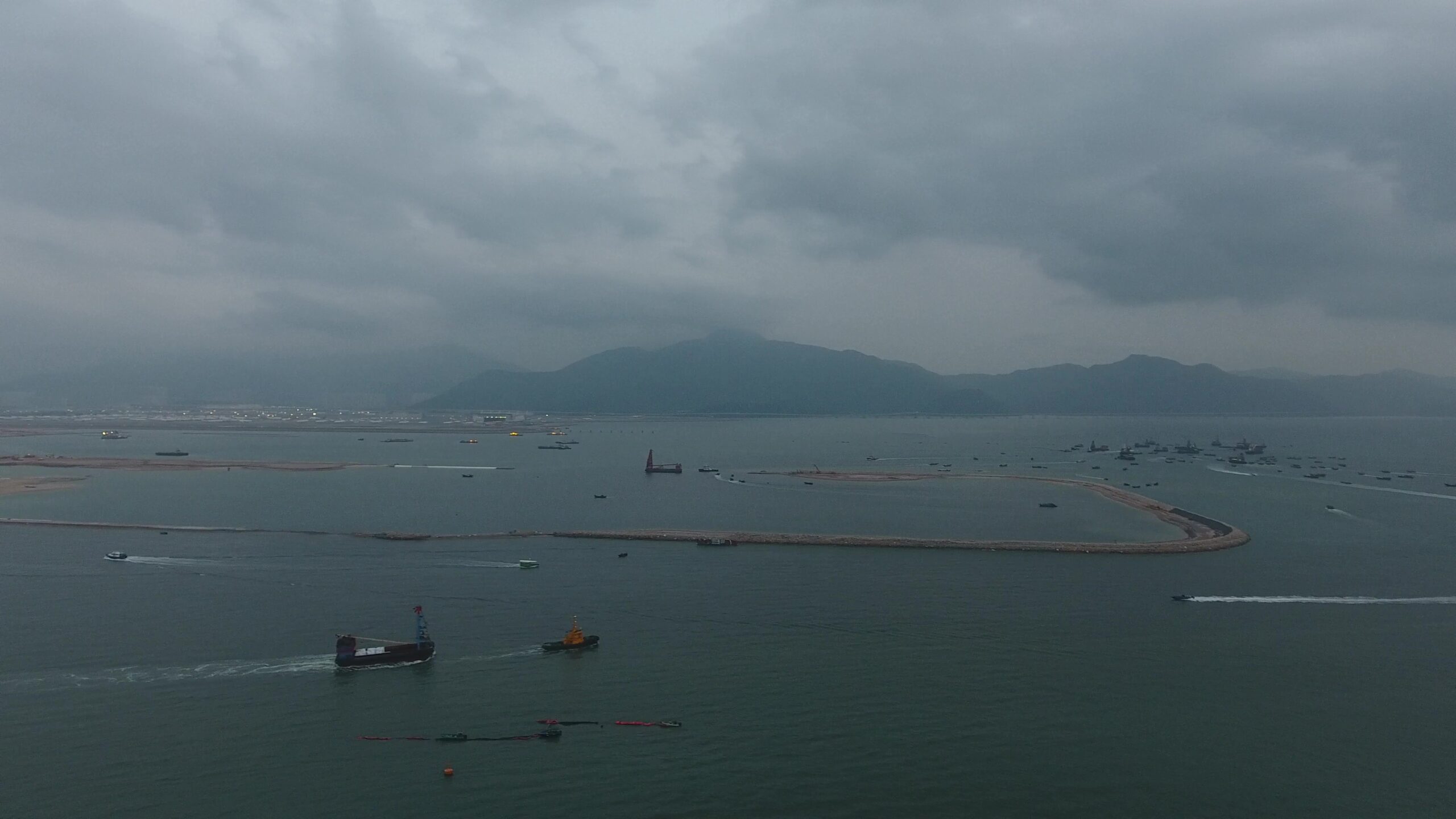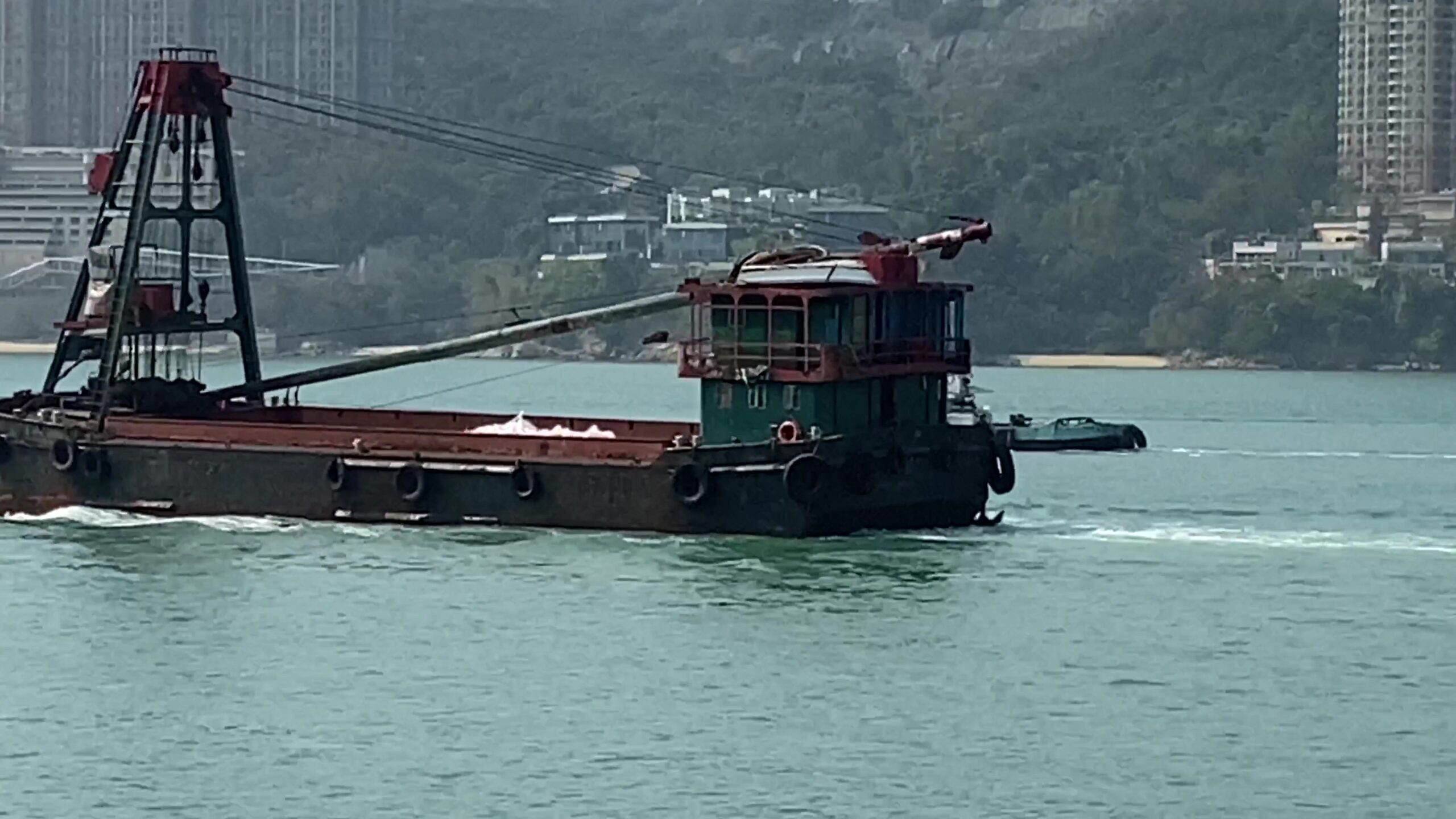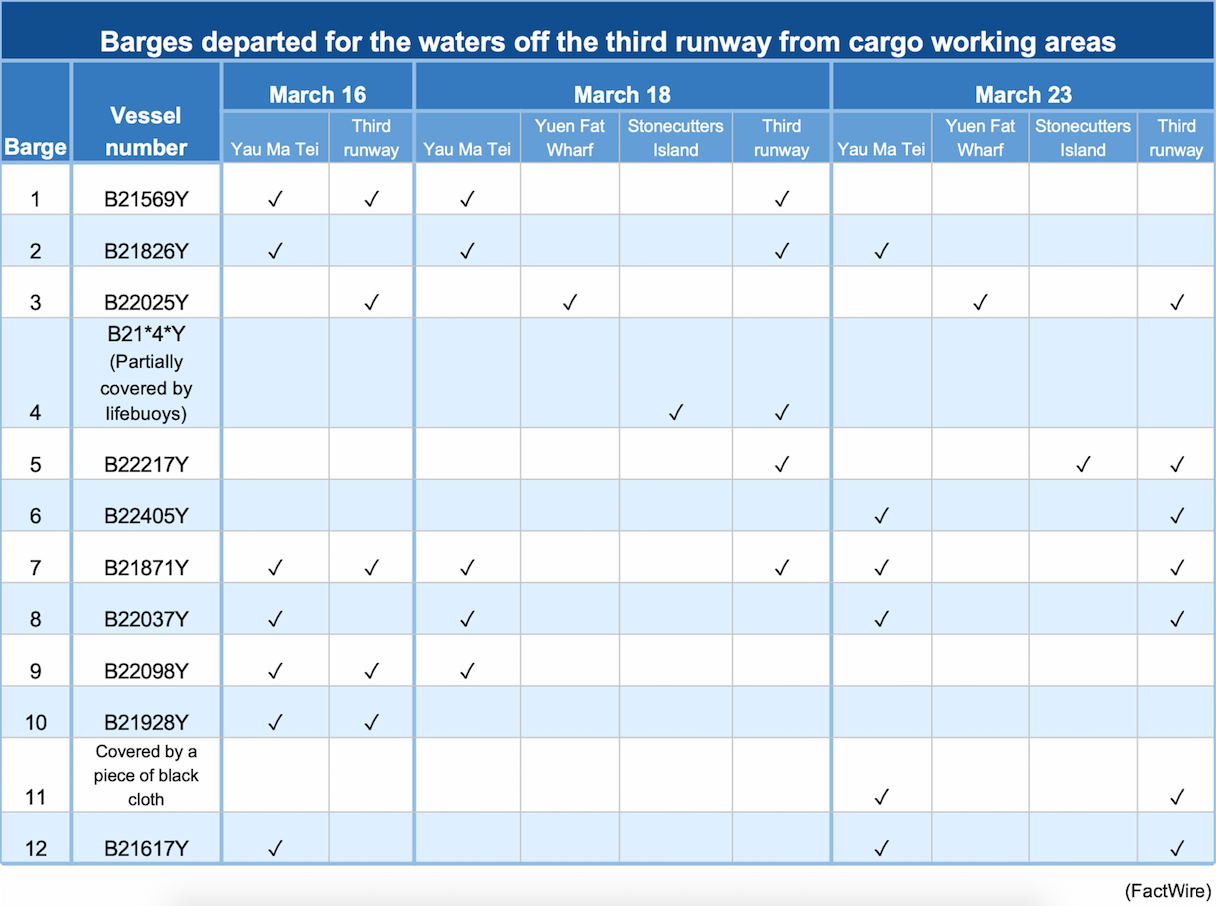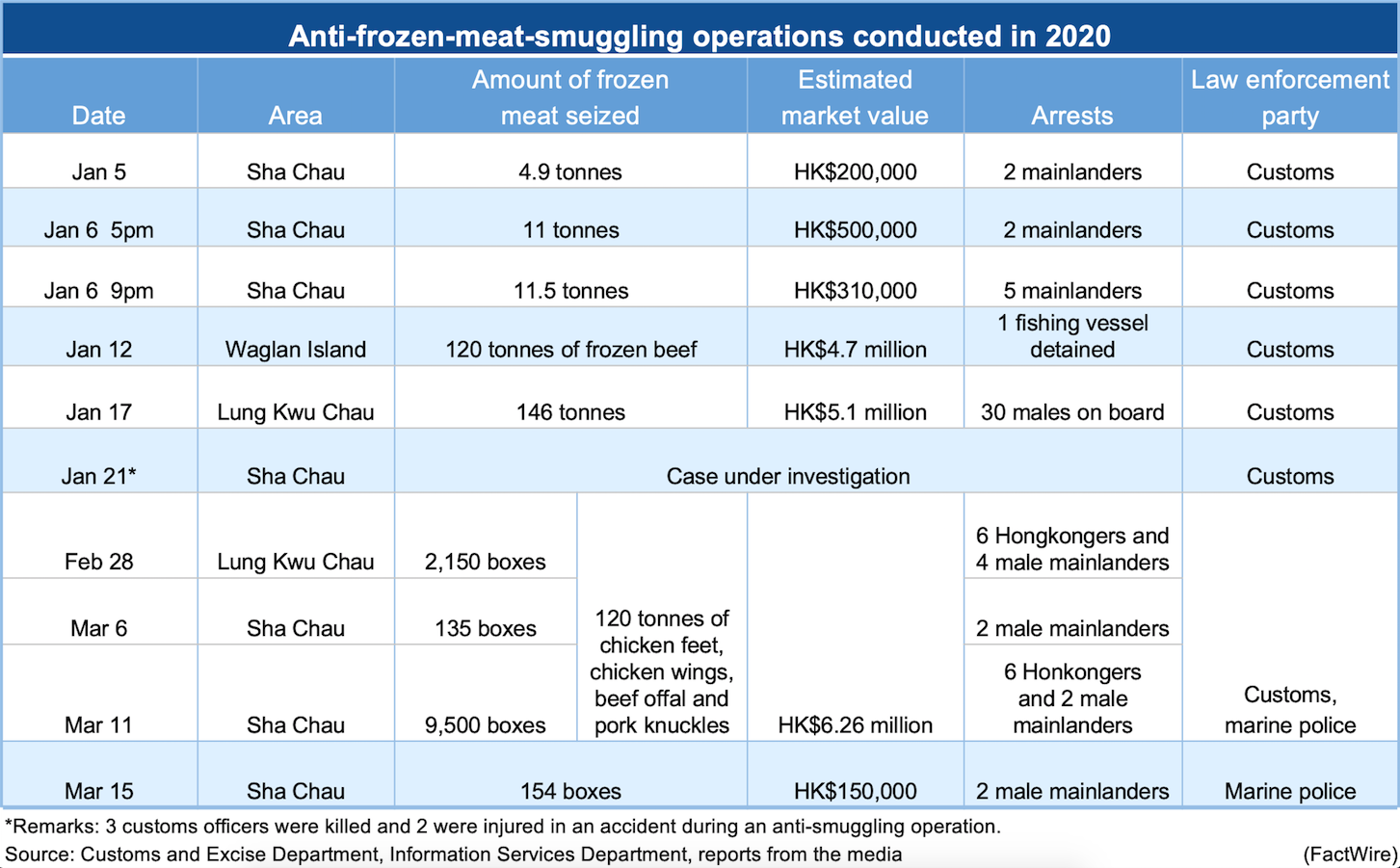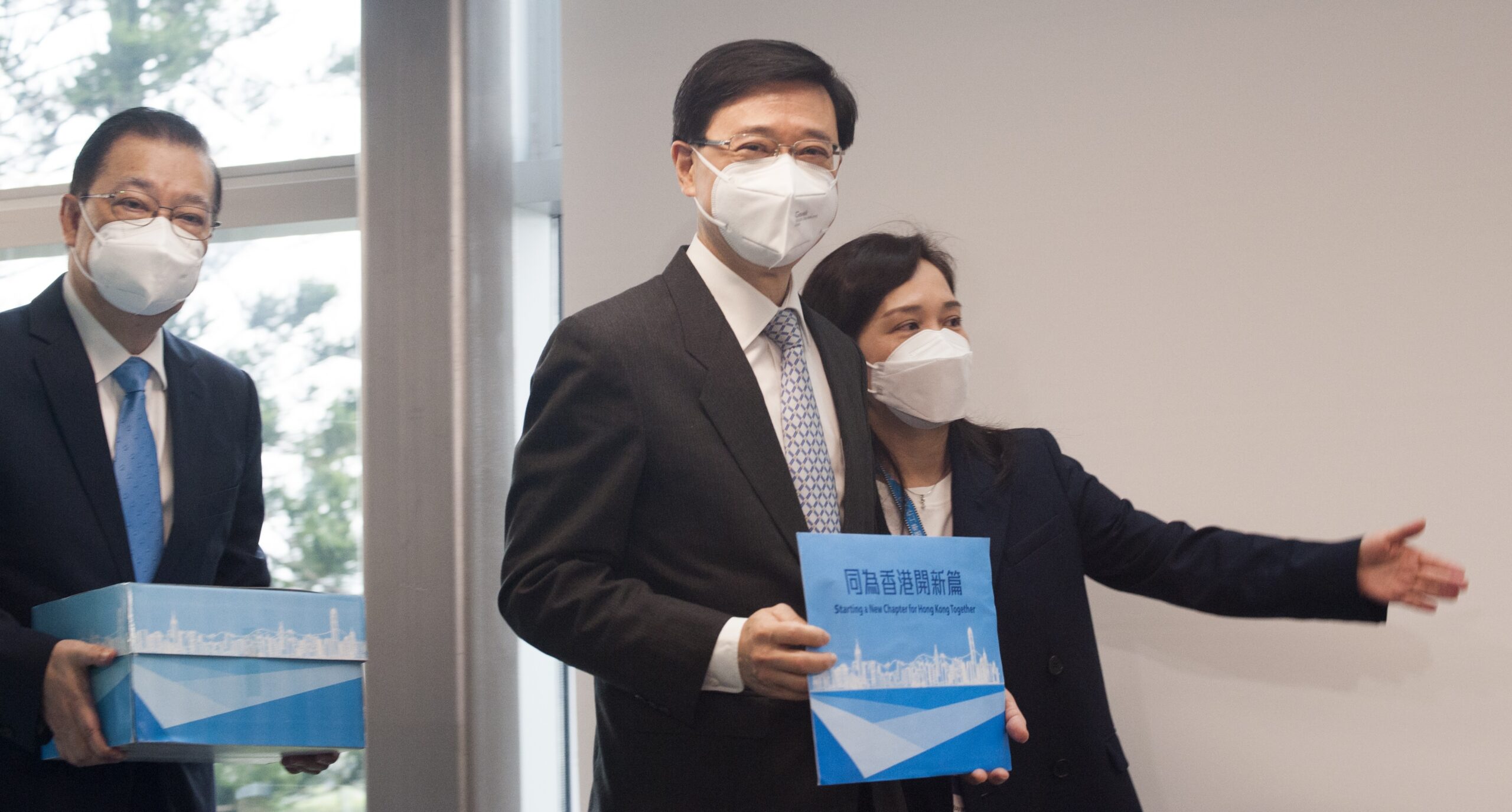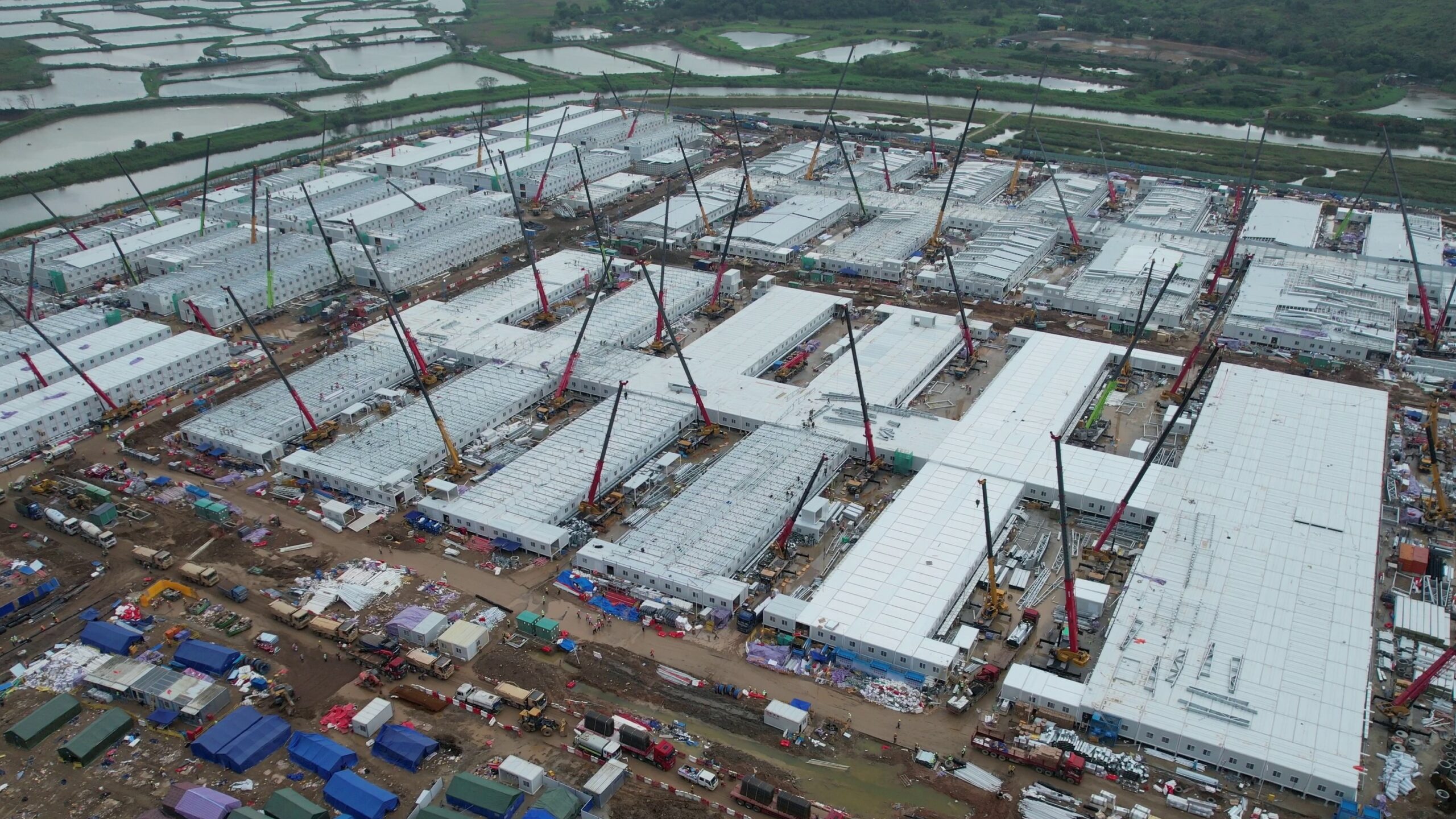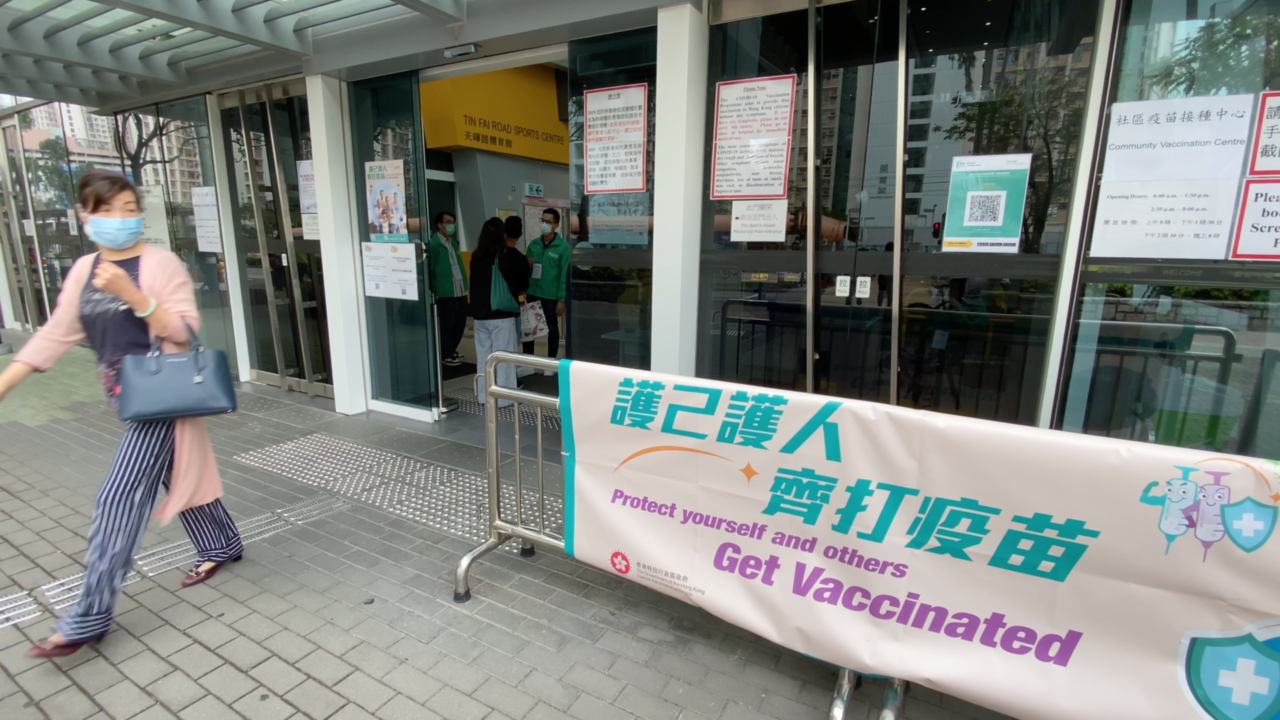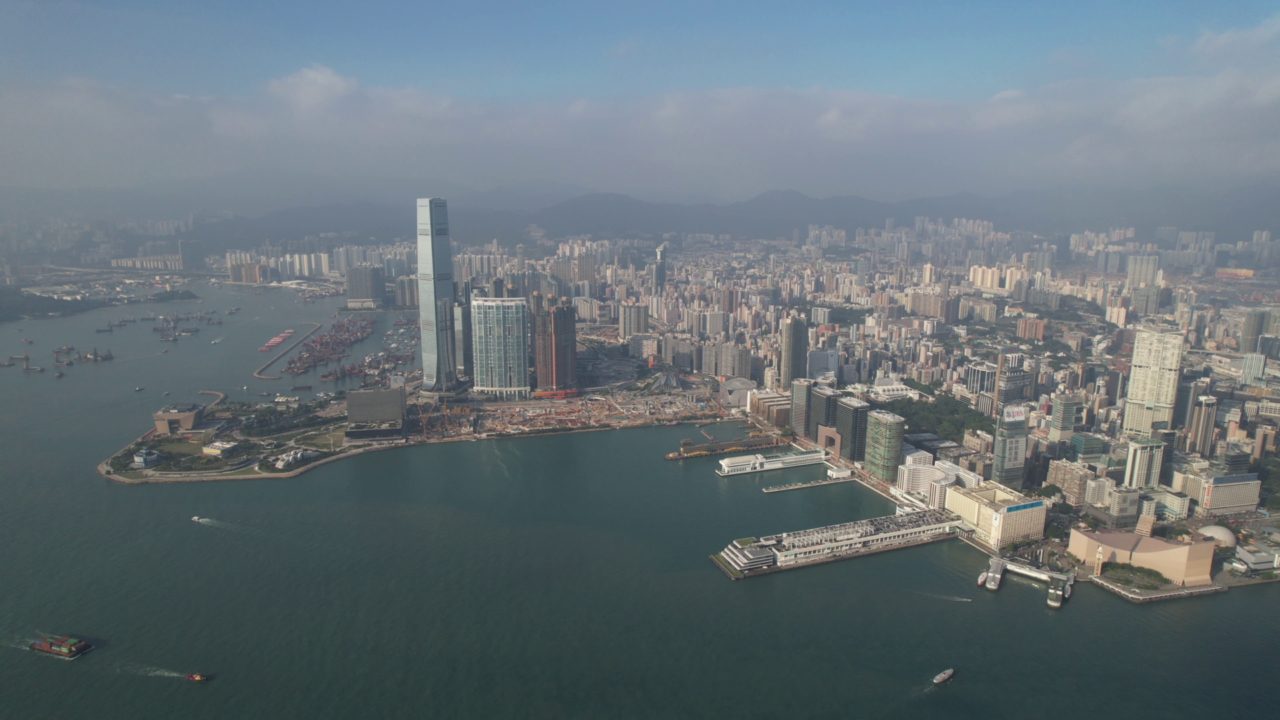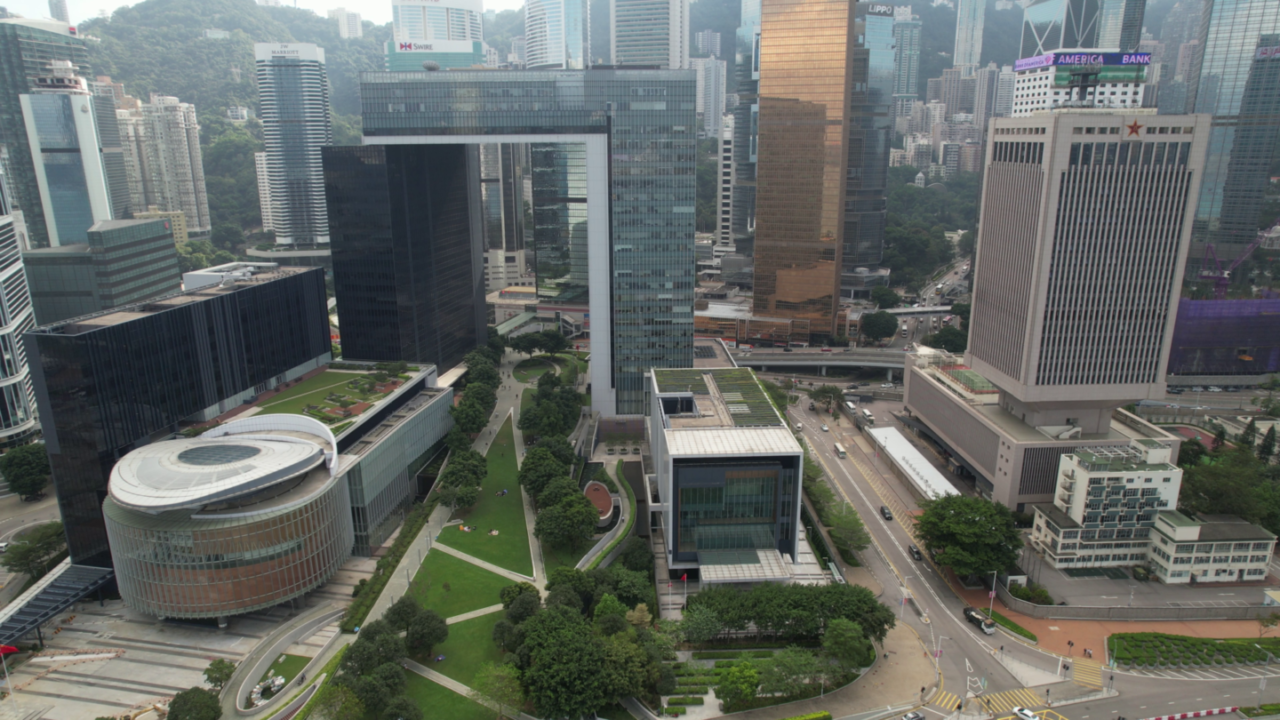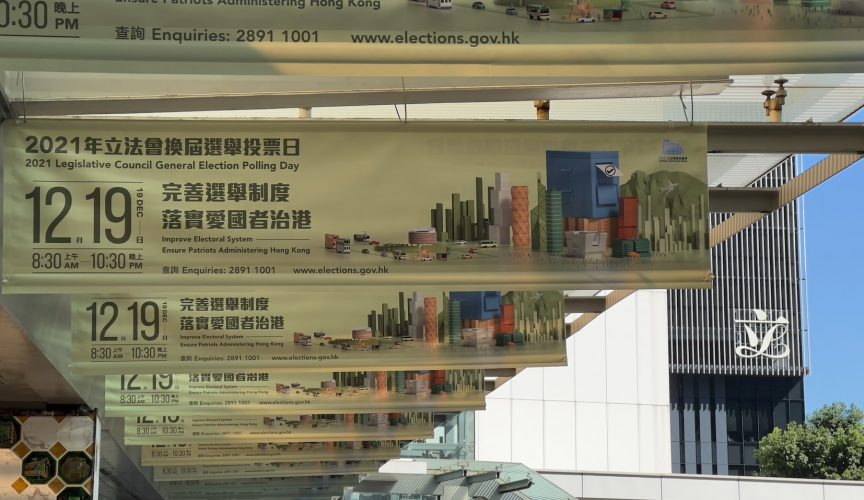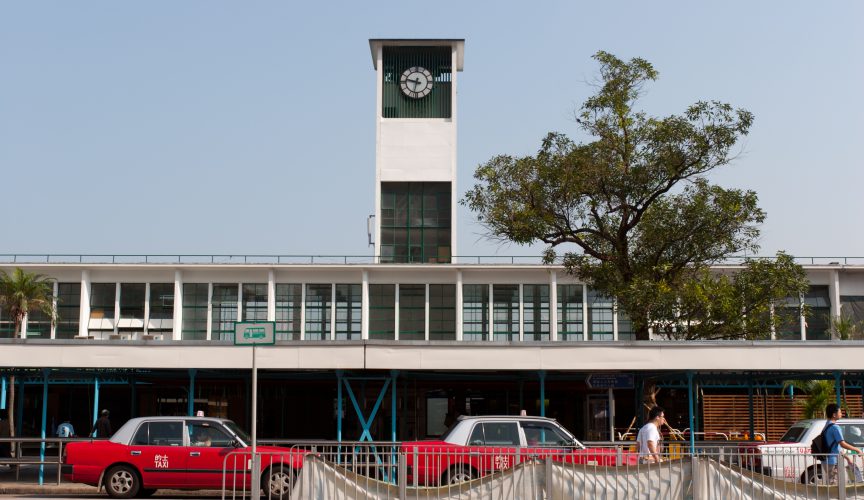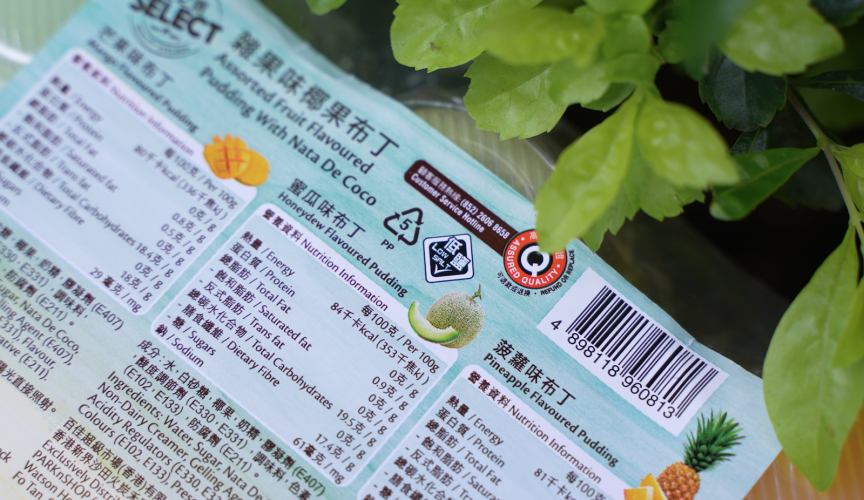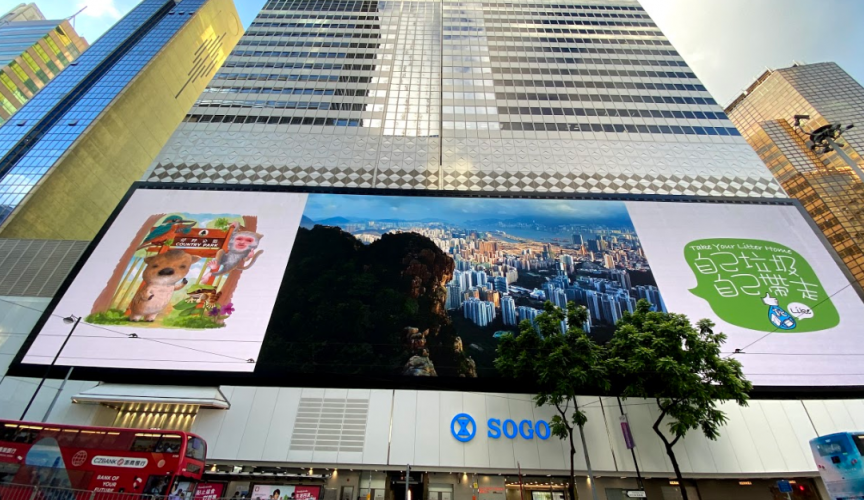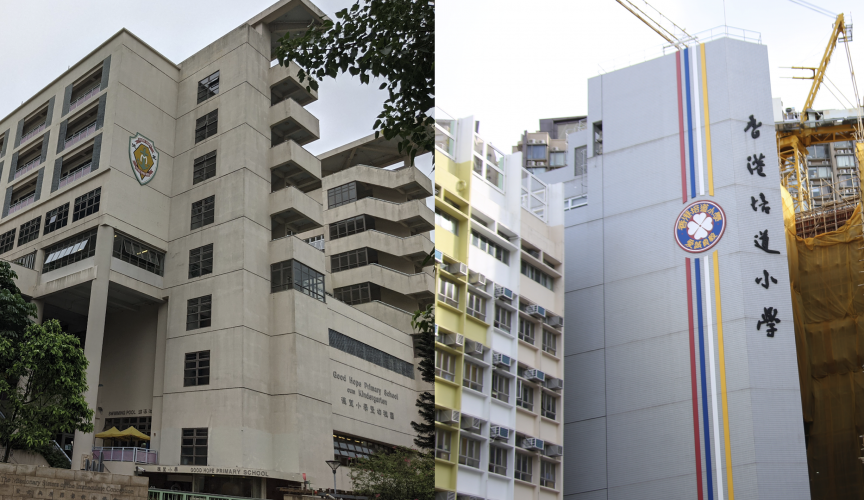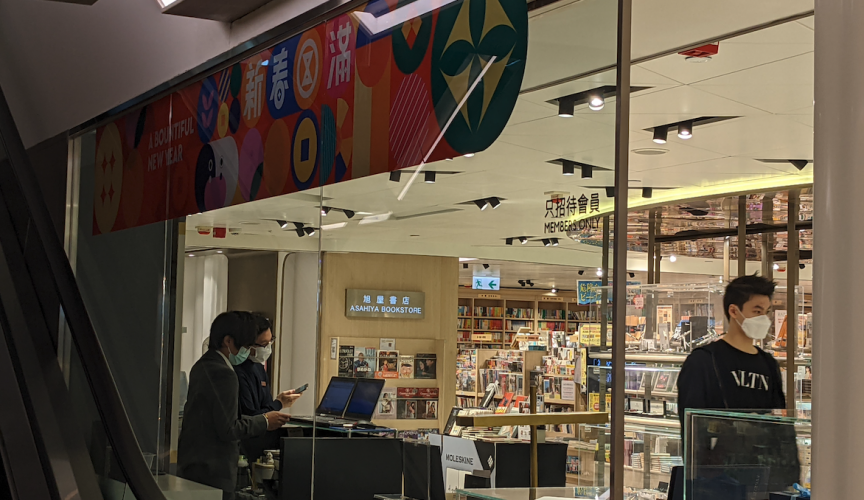According to FactWire’s investigation, frozen meat smuggling syndicates operate daily near the waters off Hong Kong International Airport’s third runway construction site. On average, more than ten barges are suspected to be smuggling over 600 tonnes of frozen meat every day, more than the amount that customs and marine police have seized in the past three months.
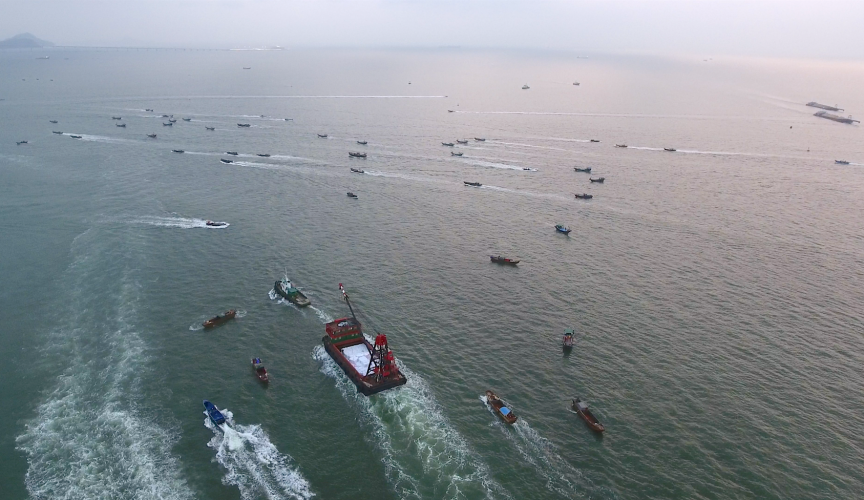
Frozen meat smuggling to Mainland China remains frequent despite multiple operations conducted by customs and marine police this year. An operation in January resulted in the death of three customs officers, the highest number of deaths in the line of duty per incident in the past four decades.
According to FactWire’s investigation, smuggling syndicates operate daily. They transport goods in refrigerated containers to Yau Ma Tei and Stonecutters Island then move the goods onto barges that sail into the waters off Hong Kong International Airport’s third runway construction site. The goods are then loaded onto speedboats from the mainland waiting off the waters near the construction site.
The smuggling operation involves about 100 vessels each evening, largely outnumbering the only one or two government launches that patrol the scene.
At least 26 local barges are involved. On average, more than ten are suspected to be smuggling over 600 tonnes of frozen meat every day, more than the amount that customs and marine police have seized in the past three months.
FactWire’s reporters were stationed at Sha Chau for several days in March. We observed a number of local barges arriving in the waters off the third runway construction site everyday at around 3:30pm where they wait for speedboats from the mainland.
On the evening of March 13, a few speedboats rushed in from Shenzhen’s Nei Lingding Island to Hong Kong waters at high speed towards a barge sailing along the third runway construction site. One Marine Department launch immediately rang its alarm and chased after the speedboats but failed. Authorities then attempted to drive out the barge instead, followed by a sudden sharp turn made by the barge’s tugboat.
Similar to observations made on other days, about ten barges stand by in an area near the mainland’s sea border every evening. At a certain hour. Dozens of speedboats cross the border in batches, lining up next to barges to pick up goods. Each barge is surrounded by five boats at a time. After receiving the items, the speedboats sail away to Lingdingyang.
The process continues late into the night. The barges do not turn on their lights, so it is too dark for further observation.
“It’s very dangerous and is affecting nearby construction workers a lot.”
A worker at the third runway construction site told FactWire that smuggling in the area has been active since the end of last year. They run between 4-5pm to midnight every day.
Starting from March this year, these activities moved from the west of Sha Chau to waters near the construction site. Suspected smuggling barges often get close to engineering ships to seek cover.
“The sea is filled with vessels every day at this time. Not long ago, a crash killed two mainlanders. It’s very dangerous and is affecting nearby construction workers a lot,” said the worker.
“But it is hard to drive them out. Construction workers once complained to the police. Now they have moved to the waters west of the construction site, but smuggling is still going on throughout the month.”
According to the construction worker, the goods being smuggled to the mainland are frozen meat. He believes the barges come from Yau Ma Tei and Stonecutters Island.
“What’s the big deal with being caught? It’s just goods on one of the many boats anyway.”
“Customs did catch one or two boats, but they couldn’t stop all of them. What’s the big deal with being caught? It’s just goods on one of the many boats anyway,” another source who once took part in the smuggling told FactWire, adding these activities have gone on for months.
From FactWire’s observation at New Yau Ma Tei Public Cargo Working Area on March 13, 16, 18 and 23, vehicles carrying refrigerated containers usually arrive from 11am onwards. We saw workers unload these containers at the berth near the Marine Department’s office. In some cases, there were more than ten containers at a time. They used a forklift to move the goods near the barges, which are later loaded onboard.
The goods were all packed in sealed white bags. Some of them were labelled ‘12’, ‘98’ and ‘H1’.
From noon to 5pm, these barges, towed by tugboats, departed New Yau Ma Tei Public Cargo Working Area. About five to ten of them sailed towards Stonecutters Island, passing by Ma Wan Channel to enter the waters near the third runway construction site.


Similar cases were found at Stonecutters Island Public Cargo Working Area and at Yuen Fat Wharf. At around 2pm on March 18, vehicles at Stonecutters Island were found unloading goods packed in white bags which were eventually lifted onto a barge. The barge departed for the third runway through Ma Wan Channel by 4:30pm that day.
The same applied to Yuen Fat Wharf in Cheung Sha Wan, where a barge loaded with white bags filled with goods departed for the third runway, through waters near Yau Ma Tei Typhoon Shelter.


rom four days of observation, a total of 26 vessels at the third runway waters had been carrying or transferring goods. One of them was a smaller cargo ship, the rest were all barges.
Some of the vessels’ numbers were covered by lifebuoys or pieces of wood. Some vessels also covered their numbers by using pieces of cloth when they were traveling to the third runway.
After careful comparison of the vessels’ numbers, names, colours and other features, FactWire confirmed that at least 12 of these vessels came from either one of the above-mentioned cargo working areas. Others were either too difficult to identify, or their origins were untraceable.
The amount on each ship varies. For example, a barge labelled B21569Y was loaded with about 200 bags on March 18 at 1pm, at New Yau Ma Tei Public Cargo Working Area. Assuming one bag is carrying 200 to 400kg, as told by an industry insider, one barge would be carrying about 60 tonnes of goods. About ten such barges were found near the third runway each day. In total the amount of goods smuggled each day could weigh over 600 tonnes.


Marine police launches were spotted near the south of the third runway site on March 16 and 18. However, they did not take any action.
From 4pm to 6:30pm on March 18, two marine police launches, numbered 19 and 52, were patrolling near the suspected smuggling vessels and had once made a close approach. Launch number 52 sailed along some barges for at least three times and did not take any action. At least three barges continued their activities in the presence of marine police.

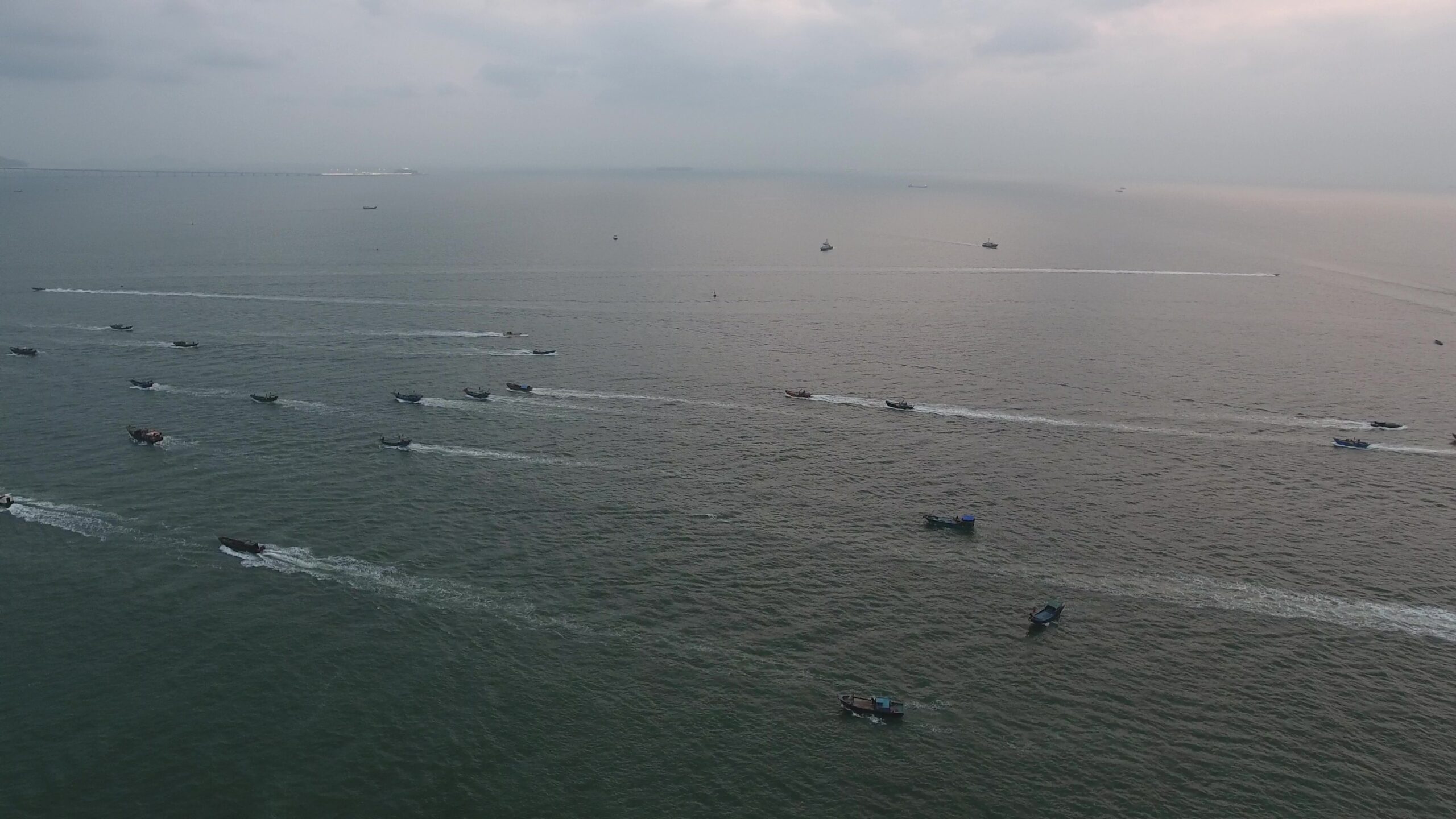


On March 16, launch number 25 of the Marine Department attempted to drive out mainland boats but failed. Another marine police launch was at the scene but did not intervene.

From days of observation, we found that berth 8 at New Yau Ma Tei Public Cargo Working Area has been used by several barges involved in suspected smuggling activities. Berth lease registration of the Marine Department shows that the berth, opposite to the Marine Department’s office, is leased to Fook Wah Construction Material Limited.
FactWire approached one of its staff members. She confirmed that it loads frozen meat onto barges for its clients. She said a white bag carries approximately 200 to 400kg of frozen meat, though the amount varies each time. The operator stressed that it does not own the barges and does not know whether or not they are involved in smuggling activities.
Au Young Wing-kei, vice-president of the Hong Kong and Kowloon Frozen Meat Dealers’ Association, said he had never heard of re-exporting frozen meat to the mainland through Hong Kong.
An anonymous merchant believed that the supply of meat has fallen in the mainland due to the African Swine Fever and coronavirus disease outbreaks. With surging prices and high demand for meat, more merchants have considered smuggling meat, the merchant said, adding that profits could be up to 10 percent more for smuggled pork.
Legal re-export to the mainland is possible but extremely uncommon due to complicated procedures and high tariffs required by the mainland.
Hong Kong Customs and marine police have already detected nine sea smuggling cases involving frozen meat within the first three months of the year. A total of 61 people were arrested and 462 tonnes of frozen meat with a market value of about HK$17.5 million were seized.
Hong Kong Customs detected ten cases last year and seized about 1,050 tonnes of frozen meat, which is 1.4 times the total in the past decade. Its market value of HK$67 million is 2.7 times the total in the past decade.
In one of the cases on January 17, customs seized 146 tonnes of suspected smuggled frozen chicken wings, pork knuckles, pork chops and pork offal imported from the United States, Spain, Brazil and Portugal, with a total expected market value of HK$5.1 million.
However, FactWire found that the total amount of meat seized in three months was less than the amount that is smuggled near the third runway in a day.
At least three accidents occurred near Sha Chau in the past three months, causing six deaths. On January 21 this year, a customs patrol launch crashed into a vessel in an anti-smuggling operation, injuring two and killing three officers.
Suspected smuggling activities have continued unabated.
According to China’s National Bureau of Statistics, only 42.55 million tonnes of pork were produced in 2019, the lowest in a decade.
Meat prices have surged since June 2019. Prices in February this year showed an increase of 87.6 percent compared to the same month last year. Pork prices had the most significant increase of 135.2 percent. Beef and lamb prices have also gone up by 21.2 and 11.2 percent.
Shortage of fresh meat increases demand for imported frozen meat. Tariffs and VAT for importing frozen meat to the mainland account for nine to 79 percent in total.
An additional 25 percent tariff had earlier been imposed on US-imported frozen meat, as a result of the China-US trade war. From March 2 this year onwards, mainland businesses can apply to waive the tariff from certain goods that include frozen meat.




